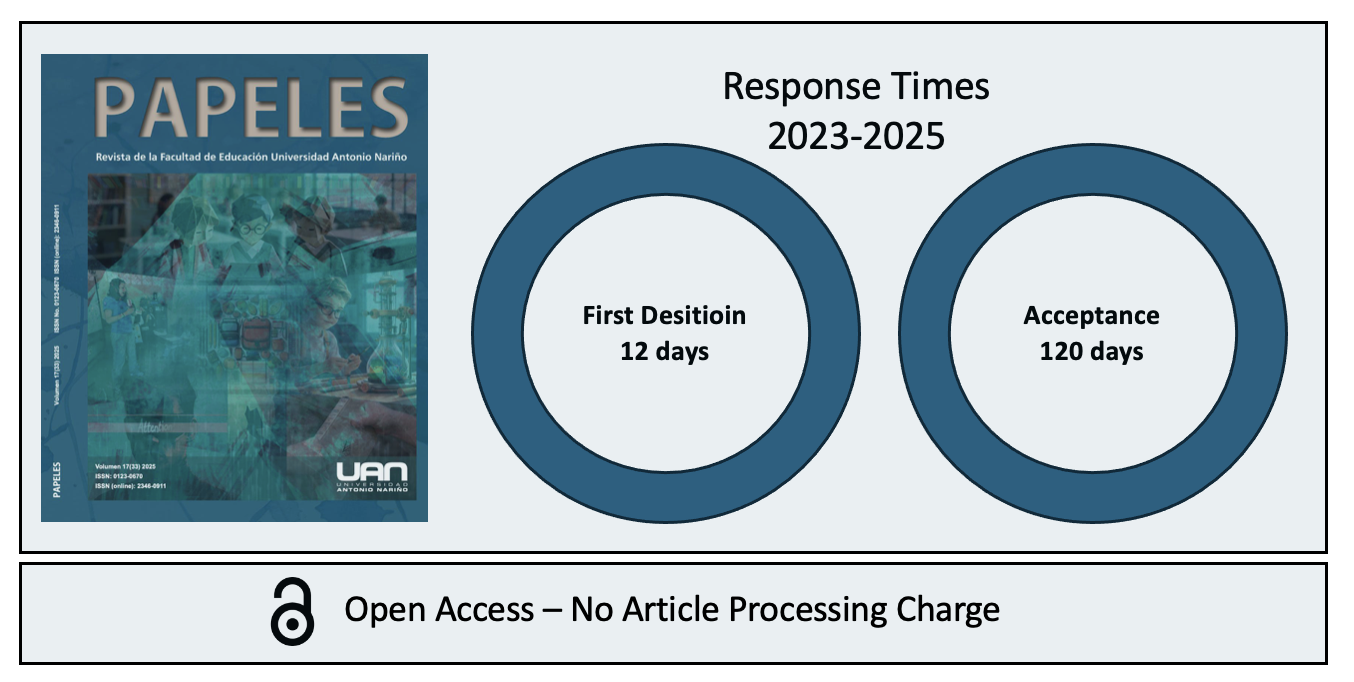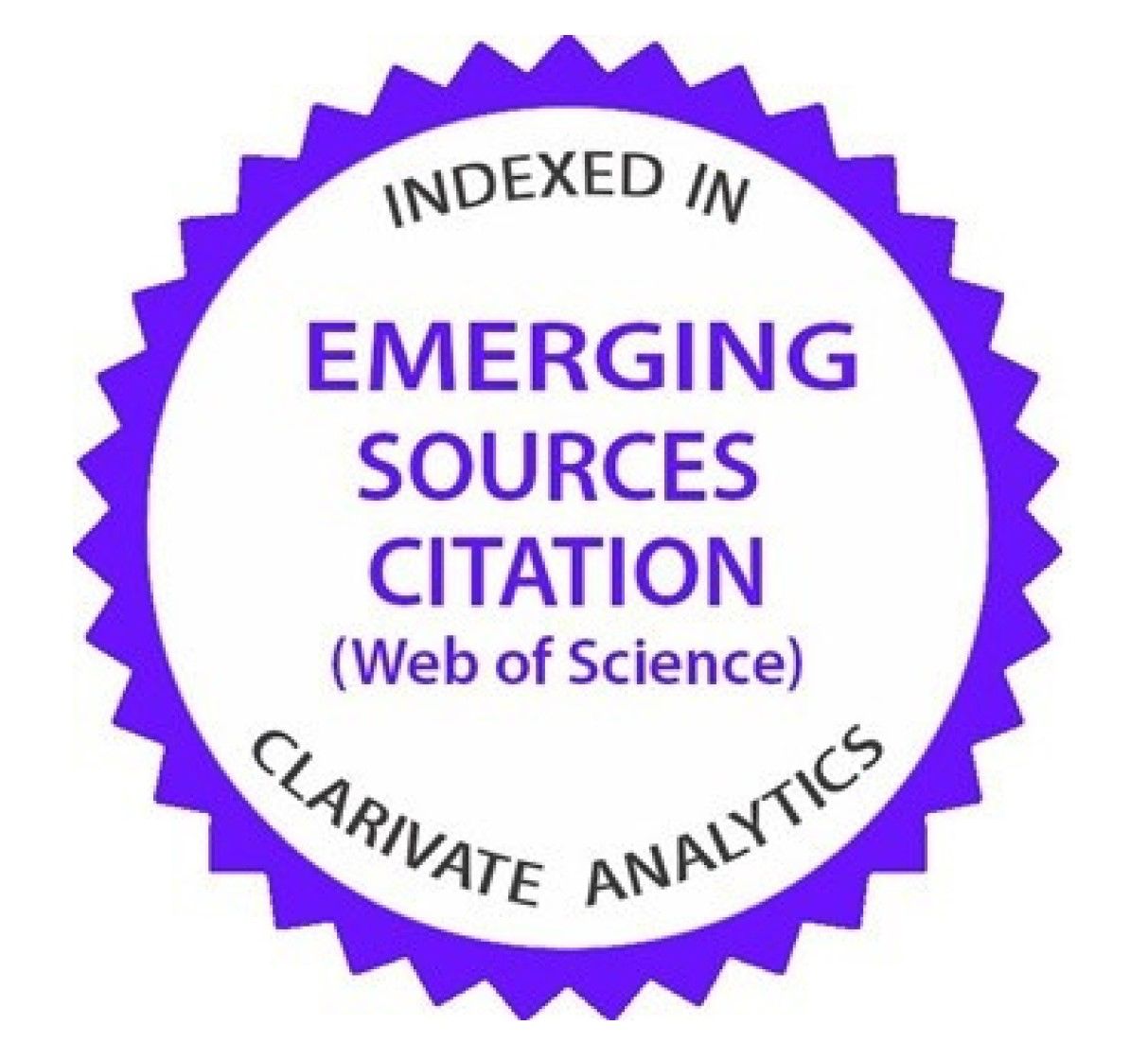Espacio lúdico y cultural para estudiantes principiantes de inglés: estudio de música y letras del movimiento hippie
DOI:
https://doi.org/10.54104/papeles.v9n18.489Keywords:
consciencia cultural, inglés como segunda lengua, género, movimiento hippie, canciones, letrasAbstract
Este artículo reporta un estudio de investigación-acción cualitativo acerca de la contribución del uso de canciones y letras para integrar la comprensión cultural y el desarrollo del lenguaje en un salón de clase de inglés como lengua extranjera en educación media. Observamos que nuestros estudiantes tuvieron dificultades para comprender y expresarse en inglés. El contexto social y cultural de la última parte de los 60 del movimiento hippie fue el tema de estudio a través de las canciones y las letras. Ofrecemos a nuestros lectores la bibliografía y síntesis más relevantes del reporte de la investigación sobre el tema para invitarlos a profundizar en ella. Los hallazgos de este estudio cualitativo sugieren que la cultura contextualizó la lengua y mejoró la comprensión de las facilidades de la expresión oral del inglés como lengua
extranjera.
Downloads
References
(1) Bhaddock. (2014). The Hippie Counter Culture Movement (1960’s). Retrieved from Mortal Journey: http://www.mortaljourney.com/2011/03/1960-trends/hippie-counter-culture-movement
(2) Ballesteros, C., Bocigas, M. O., & Montoya, A. (2015, Agosto). Singing Consumption: Discourse Analysis and Consumption Driven Values that Underlies Lyrics. Boletín de Estudios Económicos, 70(215), 347-368. Retrieved from https://issuu.com/deustobusinessalumni/docs/215-agosto_2015
(3) Batluk, L. (2015). Does Listening to English Songs Motivate Students to Expand Their Extramural English? A Case Study of Swedish Upper-Secondary School Students’ Perceptions of Possible Impact of Listening to Vocal Music on Their Extramural English. Retrieved from http://lnu.diva-portal.org/smash/get/diva2:817139/FULLTEXT01.pdf
(4) Bentayeb, N. (2006). Improving the Students' Speaking Skill Through the use of English Songs. A Case Study of First Year Students at the Department of English. Retrieved from http://thesis.univ-biskra.dz/id/eprint/1695
(5) Bernstein, B. (2003). Class, Codes, and Control (Vol. II). London: Routledge.
(6) Bhaddock. (2014). The Hippie Counter Culture Movement (1960’s). Retrieved from Mortal Journey: http://www.mortaljourney.com/2011/03/1960-trends/hippie-counter-culture-movement
(7) Buket, E. (2010). The Effects of Music on English Language Learners' Spaking Fluency and on their Motivation/Interest Level. Retrieved from http://www.thesis.bilkent.edu.tr/0003898.pdf
(8) Castro Huertas, I. A., & Navarro Parra, L. J. (2014). The Role of Songs in First-Graders’ Oral Communication Development in English. PROFILE Issues in Teachers' Professional Development, 16(1), 11-28. Retrieved from https://dialnet.unirioja.es/servlet/articulo?codigo=4858479
(9) Coats, G. (2016). Analyzing song lyrics as an authentic language learning opportunity. Report of the Central States Conference on the Teaching of Foreign Languages. 1, pp. 1-22. Lincoln: University of Nebraska. Retrieved from https://csctfl.wildapricot.org/resources/Documents/2016Report/2016%20Report.pdf
(10) Cuestas Cifuentes, M. (2006). Songs in the English Class. A Strategy to Encourage Tenth Graders' Oral Production. PROFILE Issues in Teachers' Professional Development, 7(1), 47-57. Retrieved from https://dialnet.unirioja.es/servlet/articulo?codigo=4858596
(11) De Castro Martínez, N. (2014). El uso de la Música para la enseñanza del Inglés. El Lipdub. Retrieved from https://uvadoc.uva.es/bitstream/10324/8415/1/TFG-O%20410.pdf
(12) Diakou, M. (2013). Using Songs to Enhance Language Learning and Skills in the Cypriot Primary EFL Classroom. Retrieved from http://oro.open.ac.uk/42726/1/DoctorateinEducationMariaDiakou.pdf
(13) Duarte Romero, M., Tinjacá Bernal, L. M., & Carrero Olivares, L. M. (2012). Using Songs to Encourage Sixth Graders to Develop English Speaking Skills. PROFILE Issues in Teachers' Professional Development, 14(1), 11-28. Retrieved from https://dialnet.unirioja.es/servlet/articulo?codigo=4858700
(14) Engh, D. (2013). Effective Use of Music in Language-Learning: A Needs Analysis. Retrieved from Humanising Language Teaching: http://www.hltmag.co.uk/oct13/mart03.htm
(15) Hinckle, W. (1967). The Social History of the Hippies. Ramparts Magazine, 5-26.
(16) Hyland, K. (2007). Genre pedagogy: Language, literacy and. Journal of Second Language Writing, 148-164.
(17) Jurío, I. (2014). El uso de las canciones en el aula de inglés de primaria. Retrieved from http://biblioteca.unirioja.es/tfe_e/TFE000742.pdf
(18) Klippel, F. (1994). Cultural Aspects in Foreign Language Teaching. Journal for the Study of British Cultures, 1(94), 49-61. Retrieved from https://core.ac.uk/download/pdf/12169523.pdf
(19) Kramsch, C. (1998). Language and Culture. Oxford: Oxford University Press.
(20) Kuattiningsih, N. (2007). The Use of Songs to Teach English Vocabulary to Year 2 Students of SD Negeri Sekip I No. 161 Surakarta. Retrieved from https://eprints.uns.ac.id/7220/1/78051607200904351.pdf
(21) Lee, L., & Lin, S.-C. (2015). The Impact of Music Activities on Foreign Language, English Learning for Young Children. Journal of the European Teacher Education Network, 10, 13-23. Retrieved from http://jeten-online.org/index.php/jeten/article/download/63/53
(22) Merriam, A. P. (1964). The Anthropology of Music. Illinois: University Press.
(23) Morales, C. (2008). Using Rock Music as a Teaching-Learning Tool. PROFILE Issues in Teachers' Professional Development(9), 163-180. Retrieved from http://www.redalyc.org:9081/articulo.oa?id=169213804010
(24) Palacios, N., & Chapetón, C. M. (2014). Students’ Responses to the Use of Songs in the EFL Classroom at a Public School in Bogotá: A Critical Approach. GIST Education and Learning Research Journal(9), 9-30. Retrieved from http://files.eric.ed.gov/fulltext/EJ1062661.pdf
(25) Pedraza Pineda, S. P. (2015). El karaoke como herramienta mediadora para fortalecer la oralidad en la clase de inglés como lengua extranjera. Retrieved from http://repository.unilibre.edu.co/bitstream/handle/10901/8426/EL%20KARAOKE%20COMO%20HERRAMIENTA%20MEDIADORA%20PARA%20FORTALECER%20LA%20ORALIDAD%20EN%20LA%20CLASE%20DE%20INGLES%20COMO%20LENGUA%20EXTRANJERA.pdf?sequence=1
(26) Richards, J. C., & Schmidt, R. W. (2002). Longman Dictionary of Language Teaching and Applied Linguistics. London: Routledge.
(27) Şevik, M. (2011). Teacher views about using songs in teaching English. Educational Research and Review, 6(21), 1027-1035. Retrieved from http://www.academicjournals.org/article/article1379844804_Sevik.pdf
(28) Silva Ros, M. T. (2006). La enseñanza del inglés como lengua extranjera en la titulación de Filología Inglesa: El uso de canciones de música popular no sexistas como recurso didáctico. (U. d. Málaga, Editor) Retrieved from Doctoral Thesis: http://www.biblioteca.uma.es/bbldoc/tesisuma/16853805.pdf
(29) Simpson, A. J. (2015). How to use songs in the English language classroom. Retrieved 2016, from British Council: https://www.britishcouncil.org/voices-magazine/how-use-songs-english-language-classroom
(30) Sotelo, E. R. (2011). Impementación de una metodología de aprendizaje del idioma inglés basado en la música como recurso didáctico. Retrieved November 29, 2017, from http://repository.unilibre.edu.co.
(31) Taber, K. (2011). Constructivism as educational theory: contingency in learning, and optimally guided instruction. In Educational Theory (pp. 39-61). New York: Nova Science Publishers Inc. Retrieved from http://people.ds.cam.ac.uk/kst24/KeithSTaber/Constructivism_files/Taber,%20K.%20S.%20%282011%29.%20Constructivism%20as%20educational%20theory.pdf
(32) Tayari, F., & Mahdavi, A. (2015). The Effect of English Verbal Songs on Connected Speech Aspects of Adult English Learners’ Speech Production. Advances in Language and Literary Studies, 6(1), 212-226. Retrieved from http://www.journals.aiac.org.au/index.php/alls/article/view/1309/1299
(33) Ward, B. (n.d.). What’s That Sound? Teaching the 1960s through Popular Music. Retrieved from The Gilder Lehrman institute of American History: https://www.gilderlehrman.org/history-by-era/sixties/resources/what%E2%80%99s-sound-teaching-1960s-through-popular-music
Downloads
Published
-
Abstract517
-
PDF (Español)465
How to Cite
Issue
Section
License

This work is licensed under a Creative Commons Attribution-NonCommercial-ShareAlike 4.0 International License.






